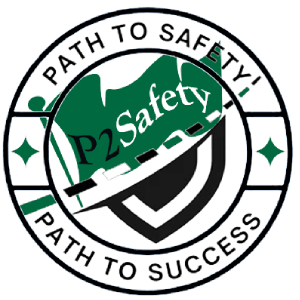CSP 50 Flashcards

1. Environmental Lapse Rate
Environmental Lapse Rate (ELR) The rate at which the air temperature changes with height in the atmosphere surrounding a cloud or a rising parcel of air. The overall average rate is a decrease of about 6.5°C/km, but the rate varies greatly in different regions of the world, in different airstreams, and at different seasons of the year. Where the lapse rate of temperature is negative (temperature increases with height), an inversion is said to exist.

2. Atmospheric stability
The stability or instability of the atmosphere (or a layer thereof) is the state of the atmosphere with respect to the reaction of a volume or “parcel” of air to a vertical displacement. The stability of the atmosphere determines the likelihood of convective.
activity, cloud type (stratus or cumulus), likelihood of atmospheric turbulence, the extent of mixing (pollutants etc.).
Stability is classified as:
stable
neutral
unstable, or
conditionally unstable

3. Fire Extinguishing Systems
Wet Pipe System
- Water in system always
- Water released when sprinkler head is heated
Dry Pipe System
- Pipe filled with compressed air
- Water released when air pressure drops after opening at sprinkler head
- Used when FREEZING a problem
Deluge System
- Wets down entire area by admitting water to sprinklers always open
- HIGH HAZARD area
- Sprinkler heads maximum of 15ft apart
Halon System
- Chemically interruptus combustion
CO2 System
- Oxygen depletion
- Standpipe and Hose System

4. Sprinkler Protection Area and Clearance (NFPA)
In accordance with NFPA 13, Section 8.5.5.3, sprinklers shall be located below the obstruction, not more than 3 in. from the outside edge of the obstruction, and within 12 in. from the bottom of the obstruction. Maximum Protection Area: 200 square feet 18" Clearance under sprinkler head

5. Sprinkler Head Spacing (NFPA)
All standard spray sprinklers have four-inch minimum spacing from walls and maximums that vary with room shape and size - "Light" "Ordinary" and "Extra" hazard classes
- Maximum spacing of 15 feet for Light and Ordinary
- Maximum spacing of 12 feet for Extra

6. Portable Fire Extinguisher Requirements
- Rated on Fire Class to be Extinguished
- Class A - Water
- Class B - CO2 or dry chemical
- Class C - CO2 or dry chemical
- Class D - dry powder
- 75' max travel distance for class A, D
- 50' max travel for Class B, C

7. Fire Stop
A firestop or fire-stopping is a form of passive fire protection that is used to seal around openings and between joints in a fire-resistance-rated wall or floor assembly. Firestops are designed to maintain the fire-resistance rating of a wall or floor assembly intended to impede the spread of fire and smoke. It Prevent fire from moving within building and Sealant around piping and conduit to prevent hot gasses from moving between rooms and floors

8. Fire Resistant Rating
Amount of time structure will withstand a fire. A fire-resistance rating typically means the duration for which a passive fire protection system can withstand a standard fire resistance test. This can be quantified simply as a measure of time, or it may entail other criteria, involving evidence of functionality or fitness for purpose.

9. Heat Stroke
Heatstroke is a life-threatening condition due to the potential for multi-organ dysfunction, with typical complications including seizures, rhabdomyolysis, or kidney failure. Heat stroke occurs because of high external temperatures and/or physical exertion. Person is dry, hot, and red
- Body fails to regulate body temperature
- MEDICAL EMERGENCY

10. Heat Hyperpyrexia
Hyperpyrexia is a condition where the body temperature goes above 106.7 degrees Fahrenheit (41.5 degrees Celsius) due to changes in the hypothalamus — the organ in the brain that regulates temperature. Hyperpyrexia is a life-threatening emergency that demands urgent medical attention.
- Less severe than heat stroke
- On the way to heat stroke

11. Heat Syncopy
- Seen with persons NOT ACCLIMATIZED to heat
- Blood flow reduced to brain
- Remove the person from area to a cooler location
- Fainting

12. Heat Exhaustion
- Cool, wet, and pale
- Nauseous
- Headache
- Cold, clammy skin

13. Heat Rash
Heat rash — also known as prickly heat and miliaria — isn't just for babies. It affects adults, too, especially in hot, humid conditions. Heat rash occurs when sweat is trapped in the skin. Small blister-like eruptions during heat

14. Prevention of Heat Illnesses
- Water/fluids
- Frequent breaks
- PPE
- Engineering controls
- AC
- Mists
- Fans

15. Trench foot
Trench foot is caused by feet that get wet and don’t dry off properly. It’s also most common in temperatures of 30˚F to 40˚F.
- Pale appearances and numbness
- Several days of exposure to cold

16. Chilblains
Chilblains (CHILL-blayns) is a condition that causes inflamed swollen patches and blistering on the hands and feet. It's caused by exposure to damp air that's cold but not freezing.
- Itching, painful reddening of skin
- Caused by congestion of capillaries when tissues exposed to COLD

17. What part of an organization is directly responsible for safety?
The Line - People doing work on the floor. On-site employees, or those who take care of clients or work directly with equipment to produce goods, can take responsibility for workplace safety

18. Safety Policy
A broad statement outlining an organizational commitment to safety. An organization's safety policy is a recognized, written statement of its commitment to protect the health and safety of the employees, as well as the surrounding community.

19. Safety Program
A broad set of plans and policies addressing the safety goals of an organization

20. Plan
A documented strategy for getting something accomplished - it may or may not be implemented. Ex. of not implemented: natural disasters

21. Heinrich's Theory
88% of accidents caused by unsafe acts. Heinrich’s domino model of accident causation Herbert W. Heinrich was a pioneering occupational safety researcher, whose 1931 publication Industrial Accident Prevention: A Scientific Approach

22. Engineering, Education, Enforcement
3 "Es" for preventing accidents caused by unsafe acts according to Heinrich

23. McGregor's Theory X and Theory Y
Theory X ("External): Employees need external rewards and punishments - employees need some consequences and do not have internal motivation. Theory Y: Some employees are internally motivated

24. Japanese style management theory - team approach
Theory Z: Theory Z is a name for various theories of human motivation built on Douglas McGregor's Theory X and Theory Y. Theories X, Y and various versions of Z have been used in human resource management, organizational behavior, organizational communication and organizational development.

25. There is disconnect between management and workers
Chris Agyris - Incongruence Theory. Chris Argyris (July 16, 1923 – November 16, 2013 ) was an American business theorist and professor emeritus at Harvard Business School. Argyris, like Richard Beckhard, Edgar Schein and Warren Bennis, is known as a co-founder of organization development, and known for seminal work on learning.

26. Herzberg Motivation/Hygiene Theory
Hygiene (Satisfaction) Factors:
- Money
- Status
- Relationship with Manager
- Company Policies
- Work Conditions
Motivation Factors:
- Achievement
- Recognition
- Enjoyment of Work
- Possibility of Promotion
- Responsibility
Must build both Satisfaction and Motivation into job

27. Maslow's Hierarchy of Needs
Maslow’s hierarchy of needs is a motivational theory in psychology. This hierarchy—also referred to as Maslow’s theory of motivation—includes five levels of human needs: physiological, safety, love and belonging, esteem and self-actualization. Within each level are specific needs that allow for an individual to feel fulfilled.

28. Pareto Principle
80-20 Rule; 80% of effects results from 20% of causes

29. Role of Principals in a Company
Set policies and objectives for an organization. CEO: Sets example for safety; should participate in safety meetings

30. From where authority of safety function in a company is generally derived?
Ability to influence LINE management. The safety manageris the person in charge of the development of the health and safety program, and the first in the line of authority in this department.

31. How is the size of safety department generally determined?
- Frequency of Accidents
- Tasks Assigned to Safety Department
- Number of Workers

32. ISO 9001
- QUALITY CONTROL standard
- Documentation is key
- Elements:
- Quality MANAGEMENT SYSTEM
- Management RESPONSIBILITY
- RESOURCE management
- Product REALIZATION
- Measurement, Analysis, Improvement

33. ISO 14000
ISO 14001 provides requirements with guidance for use that relate to environmental systems.

34. ISO 45001
ISO 45001 is an ISO standard for management systems of occupational health and safety (OH&S), published in March 2018. The goal of ISO 45001 is the reduction of occupational injuries and diseases, including promoting and protecting physical and mental health.

35. ANSI/ASSP Z10
- "Plan, do, check, act" model. ANSI/ASSP Z10.0 is closely tied with the concept of anOHSMS, as the American National Standard was an early effort to standardize sucha system.

36. OSHA VPP
- Voluntary Protection Program
- 4 Components:
- Management LEADERSHIP and employee
INVOLVEMENT
- Worksite ANALYSIS
- Hazard PREVENTION and CONTROL
- Safety and Health TRAINING

37. General Duty Clause (OSHA)
The General Duty Clause, by definition, means that employers must protect employees from any serious hazard once they're aware of it – whether OSHA's rules specifically address it or not. That sounds pretty simple, but like everything about regulations and enforcement, it's a bit more complicated in practice. - Catch-all clause that OSHA uses if there is not a specific regulation that applies

38. OSHA Inspection Priority
1. Imminent Danger - Ex. People observed working on the roof not tied off.
2. Catastrophe/Accident
3. Employee Complaint
4. Programmed High Hazard - Scheduled inspections for high hazard industries
5. Follow-Up

39. Horizontal and Vertical Standards
- Horizontal: applies to everyone<
- Vertical: industry specific (ex. welding)
- Vertical takes precedence over horizontal

40. OSHA 300 Log
OSHA Form 300 (or the OSHA 300 form) is the Occupational Safety and Health Administration's Log of Work-Related Injuries and Illnesses. Annual log of injuries and illnesses
- Must be posted Feb 1 - APRIL 30 each year

41. Incident Log
OSHA 301 Form

42. Machine Safeguarding Principles
Prevent people from contacting dangerous machine parts.
- Moving parts
- Hot parts
- Prevent flying parts from hitting people

43. Machine Motions - 5 types
1. Rotation like
- Shafts
- Pulleys
2. Reciprocating or Transverse
- Jigsaw
3. In-running Nip Points (Pinch point)
- Chain and sprocket
- Belt and pulley
4. Cutting
- Circular saw
- Drill
5. Punching
- Shearing, bending

44. Danger Line
Line of fire injuries occur when the path of a moving object or the release of hazardous energy intersects with an individual’s body.
- Point where dangerous action occurs
- Pinch point narrowing to 3/8 INCH or less

45. Machine Safeguarding Methods
- Physical Guards
- Physically prevent contact
- Devices
- De-energize system when enter hazardous area
- Distance - keep dangerous parts out of reach of contact
- Location
- Dangerous operations located in separate area from
people

46. Qualities of Effective Safeguarding Methods
- Exist as function of machine
- Difficult to override

47. Guard Distance from Danger Line
Distance from danger line increases as max opening width increases. The distance the guard must be from the dangerous part is 530 mm.

48. Physical Guard Properties
Physical Guards MUST:
- Be PERMANENT part of machine
- PREVENT ACCESS to the danger zone
- DURABLE to resist wear
- ALLOW routine MAINTENANCE
Physical Guards MUST NOT:
- INTERFERE with machine operation
- Create additional hazards themselves

49. Enclosure
Machine point guarding is often accomplished using off-the-shelf guards while enclosure guarding is unique to each installation. Enclosing hazard is an effective way to eliminate injuries

50. Interlocks
De-activate equipment when guard removed.
- Ex. Washing machine




